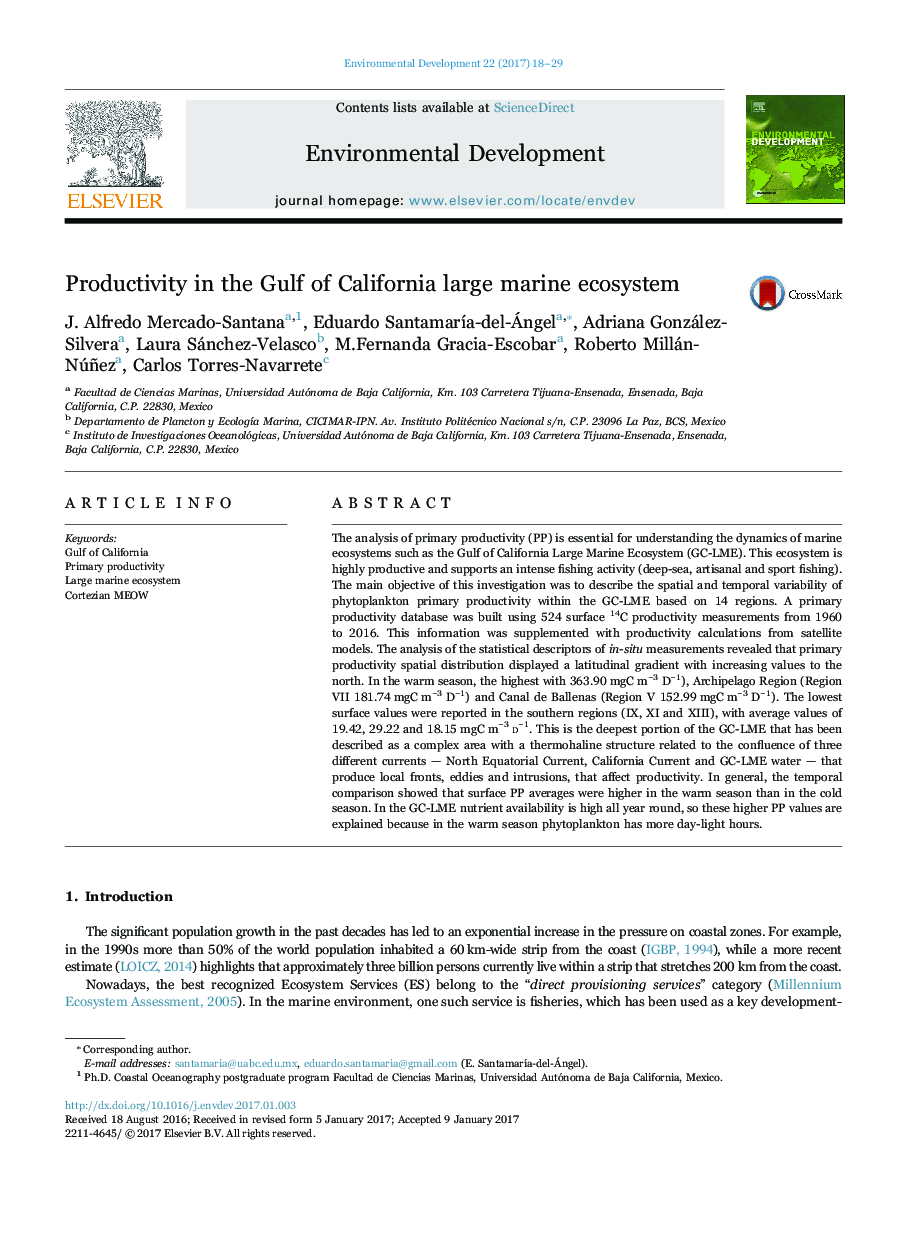| کد مقاله | کد نشریه | سال انتشار | مقاله انگلیسی | نسخه تمام متن |
|---|---|---|---|---|
| 5744123 | 1618079 | 2017 | 12 صفحه PDF | دانلود رایگان |
The analysis of primary productivity (PP) is essential for understanding the dynamics of marine ecosystems such as the Gulf of California Large Marine Ecosystem (GC-LME). This ecosystem is highly productive and supports an intense fishing activity (deep-sea, artisanal and sport fishing). The main objective of this investigation was to describe the spatial and temporal variability of phytoplankton primary productivity within the GC-LME based on 14 regions. A primary productivity database was built using 524 surface 14C productivity measurements from 1960 to 2016. This information was supplemented with productivity calculations from satellite models. The analysis of the statistical descriptors of in-situ measurements revealed that primary productivity spatial distribution displayed a latitudinal gradient with increasing values to the north. In the warm season, the highest with 363.90Â mgCÂ mâ3Â Dâ1), Archipelago Region (Region VII 181.74Â mgCÂ mâ3Â Dâ1) and Canal de Ballenas (Region V 152.99Â mgCÂ mâ3Â Dâ1). The lowest surface values were reported in the southern regions (IX, XI and XIII), with average values of 19.42, 29.22 and 18.15Â mgCÂ mâ3Â dâ1. This is the deepest portion of the GC-LME that has been described as a complex area with a thermohaline structure related to the confluence of three different currents - North Equatorial Current, California Current and GC-LME water - that produce local fronts, eddies and intrusions, that affect productivity. In general, the temporal comparison showed that surface PP averages were higher in the warm season than in the cold season. In the GC-LME nutrient availability is high all year round, so these higher PP values are explained because in the warm season phytoplankton has more day-light hours.
Journal: Environmental Development - Volume 22, June 2017, Pages 18-29
